Welcome to our blog post, where we delve into the fascinating world of Australia’s greenhouse farming industry. Today, we will unveil the secrets behind its remarkable success and highlight the key factors contributing to its thriving nature. Greenhouse farming has revolutionized cultivating agricultural produce, enabling year-round production, increased crop yields, and protection against adverse weather conditions.
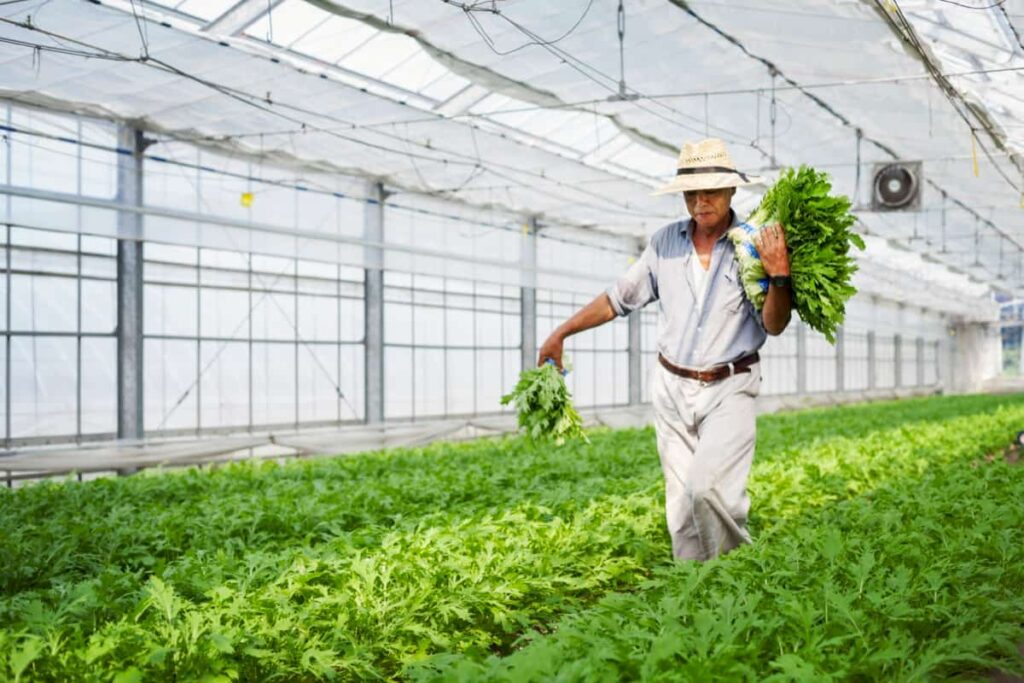
This innovative farming method in Australia has gained immense popularity, leveraging its unique climate and rich agricultural heritage. We will explore the accurate data and statistics that showcase the impressive growth and economic impact of greenhouse farming in Australia, highlighting its sustainable practices and promising future.
What is Australian Greenhouse Farming?
Australian greenhouse farming refers to cultivating plants in controlled environments, such as glass or plastic structures, to optimize growth conditions. It has revolutionized the agricultural landscape in Australia by extending the growing season and protecting crops from harsh weather conditions.
Greenhouse farmers utilize advanced technologies like temperature control, irrigation systems, and artificial lighting to create optimal growing conditions for various crops, including vegetables, fruits, and flowers. This method enables year-round production, higher crop yields, and better-quality produce. In Australia, greenhouse farming has experienced significant growth, with an increasing number of farms adopting this sustainable and efficient approach to agriculture.
In case you missed it: How to Start Hydroponic Farming in Australia: Scope, Types, Pros, and Cons
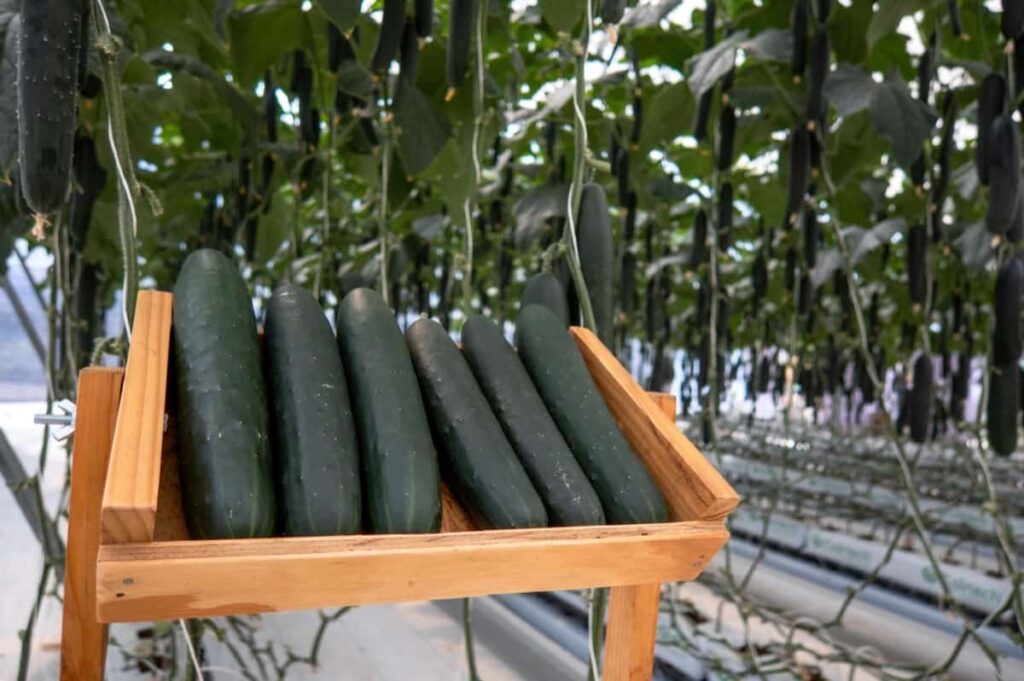
Types of Greenhouses in Australia
Glass Greenhouses: These traditional structures feature glass walls and roofs that allow ample sunlight to penetrate while providing insulation. They are suitable for a wide range of crops and provide excellent visibility.
Plastic Greenhouses: Cost-effective and versatile, plastic greenhouses use polyethylene or polycarbonate sheets for walls and roofs. They are lightweight, easy to assemble and offer good insulation. Plastic greenhouses are commonly used for seasonal crops or in regions with mild climates.
Tunnel Greenhouses: Also known as hoop houses, tunnel greenhouses are arched structures covered with plastic or polyethylene. They are cost-effective and ideal for smaller-scale farming or seasonal crops.
Shade Houses: These greenhouses are designed to provide partial shade for sensitive plants. They have lattice or screened roofs and are commonly used for growing ornamental plants, seedlings, or shade-loving herbs.
Aquaponic Greenhouses: Combining aquaculture and hydroponics, these greenhouses create a symbiotic system where fish waste provides plant nutrients. Aquaponics is gaining popularity in sustainable farming practices.
Benefits of Greenhouse Farming in Australia
Greenhouse farming in Australia offers numerous benefits, including an extended growing season, weather protection, increased crop yields, pest and disease control, water efficiency, quality control, resource conservation, land optimization, local food production, job creation, and economic growth. These benefits enable year-round cultivation, reduced crop loss risks, and improved crop yields compared to open-field farming.
Greenhouses also provide a physical barrier against pests and diseases, minimizing the need for harmful chemicals. Advanced irrigation systems in greenhouses also ensure efficient water usage, reducing waste. Greenhouse farming promotes local food production, reducing long-distance transportation and carbon emissions. Overall, greenhouse farming in Australia offers a sustainable and efficient approach to agriculture, ensuring a reliable food supply while minimizing environmental impact.
Greenhouse Farming Techniques in Australia
- Hydroponics: This technique involves growing plants without soil, with nutrient-rich water solutions providing essential minerals. It conserves water and allows precise control over nutrient levels.
- Aquaponics: Combining aquaculture and hydroponics, aquaponics creates a symbiotic system where fish waste provides nutrients for plants while plants filter the water for the fish.
- Vertical farming: Utilizing vertical space, this technique stacks plants in multiple layers, maximizing land efficiency and increasing crop yield.
- Controlled environment agriculture (CEA): CEA involves precisely controlling environmental factors like temperature, humidity, light, and CO2 levels to create optimal crop growth conditions.
- Shade netting: Shade netting helps regulate sunlight exposure, protecting delicate plants from excessive heat and UV radiation while maintaining a conducive growing environment.
- Drip irrigation: This water-efficient technique delivers water directly to plant roots, minimizing wastage and ensuring plants receive precise water and nutrients.
- Integrated Pest Management (IPM): IPM combines biological, cultural, and chemical methods to manage pests effectively while minimizing environmental impact and reducing reliance on pesticides.
- Heat and energy management: Efficient insulation, ventilation systems, and energy-saving technologies help maintain optimal temperatures inside the greenhouse, reducing energy consumption and costs.
- Carbon dioxide enrichment: Controlled CO2 levels promote plant growth and photosynthesis, enhancing crop productivity and yield.
In case you missed it: Best Practices to Grow Brinjal/Eggplant at Home: Check How this Guide Helps Beginners

Step-by-step Process to Starting a Greenhouse Business in Australia
Starting a greenhouse business in Australia requires a comprehensive process that includes research and planning, site selection, greenhouse design and construction, crop selection and sourcing, operations and management, marketing and sales, financial management, and continuous learning and adaptation.
These steps involve conducting thorough market research, developing a business plan, selecting a suitable location, designing and constructing the greenhouse, selecting crops based on market demand, profitability, and expertise, setting up systems for irrigation, climate control, pest management, and fertilization, hiring skilled labor or training employees, and implementing efficient record-keeping and inventory management practices.
Marketing and sales involve establishing relationships with local markets, retailers, restaurants, or direct-to-consumer sales through farmers’ markets or online platforms. Financial management involves tracking expenses, maintaining a budget, and seeking funding options. Continuous learning and adaptation involve staying updated with industry trends, attending workshops, and networking with other greenhouse farmers.
Sustainable Practices in Australian Greenhouse Farming
- Sustainable practices, from seed selection to harvesting, are crucial in Australian greenhouse farming. Greenhouse farmers prioritize using high-quality seeds from reputable sources, focusing on disease-resistant and climate-adapted varieties to minimize chemical treatments.
- Water management is crucial, with efficient irrigation systems, drip irrigation, and moisture sensors reducing evaporation and runoff. Integrated Pest Management (IPM) strategies involve beneficial insects, traps, physical barriers, and cultural practices to control pests naturally.
- Precision fertilization methods maintain a balanced nutrient supply, minimizing nutrient runoff and protecting water sources. Energy efficiency is also essential, with energy curtains and LED lights reducing heat loss during colder months.
- Waste management includes recycling and composting systems, with organic waste materials composting to create nutrient-rich soil amendments. Harvesting and packaging are crucial, with careful handling techniques and eco-friendly packaging materials.
Crop Selection for Australian Greenhouse Farming
Greenhouse vegetable production is a thriving and sustainable practice in Australia, allowing for year-round cultivation. Various types of greenhouses, such as hoop houses, tunnel foundations, and glass tube greenhouses, are utilized to accommodate different scales of production. The choice of soil is crucial, with fertile and well-draining soils ideal for vegetable cultivation in greenhouses.
In case you missed it: How to Grow Green Chilli Peppers Faster: Best Tips to Increase Flowering, Fruiting, and Production Yield
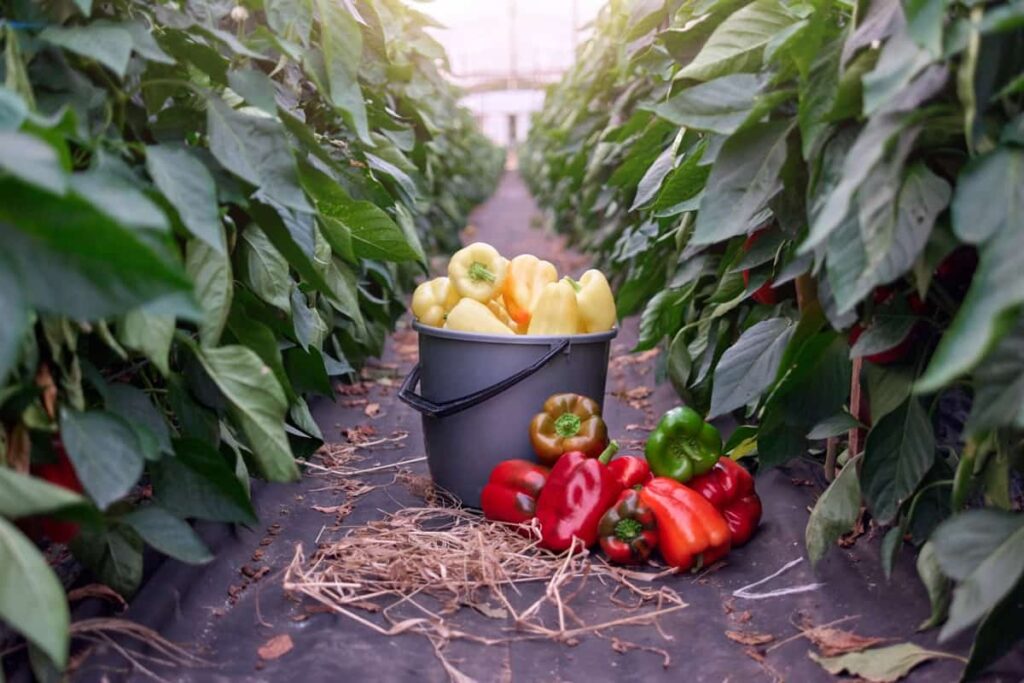
Temperature control is another essential factor, with heating systems employed to maintain optimal temperature ranges depending on the climate. Australia’s temperate climate favors the growth of diverse crops in greenhouses, including bell peppers, cucumbers, eggplants, garlic, lettuce, tomatoes, and zucchini.
Greenhouse farming offers several advantages, such as reducing greenhouse gas emissions and enabling high-quality crop production. It is particularly attractive to farmers with limited space or those seeking to grow seasonal crops. Popular crops grown in Australian greenhouses include cucumbers, tomatoes, strawberries, grapes, peppers, lettuce, kale, and eggplants.
The top states for greenhouse farming in Australia are Victoria, New South Wales, Queensland, Western Australia, and Tasmania. Victoria stands out as the largest producer of greenhouse vegetables, followed by Queensland and New South Wales. These states collectively contribute to the majority of greenhouse production in the country, supplying various crops such as apples, pears, tomatoes, peppers, and cucumbers.
Best Time to Start a Greenhouse Farm in Australia
Greenhouse farms in Australia are available in various types, including Grow Bags, Trellising Systems, Intensive, Semi-Intensive, Extensive Greenhouses, and Hoops and Box Frame Greenhouses. The best time to start a greenhouse farm in Australia is during winter when temperatures are cool enough to keep plants warm. Building costs vary depending on size and roofing material, with a typical greenhouse cost between $10,000 and $25,000.
Approximately 60 greenhouses operate in Australia, mainly by universities and research institutes. The number is expected to increase as the agricultural sector shows greater interest in greenhouse farming. However, there are potential problems with greenhouse farming in Australia, such as energy consumption, energy intensity, and environmental concerns. Reliance on renewable energy sources and proper waste management is essential to minimize reliance on fossil fuels and meet increased food demand.
Climate Control Systems for Australian Greenhouses
Climate control systems are crucial for maintaining optimal growing conditions in Australian greenhouses. These systems regulate temperature, humidity, ventilation, and light levels to create a controlled environment for plant growth. Heating systems maintain desired temperature ranges while cooling systems prevent overheating during hot weather. Humidity control prevents excessive moisture and disease development using humidity sensors and misting systems.
In case you missed it: Farming Business Plan PDF: for Poultry, Livestock, Agriculture, Horticulture, Greenhouse, and Hydroponic
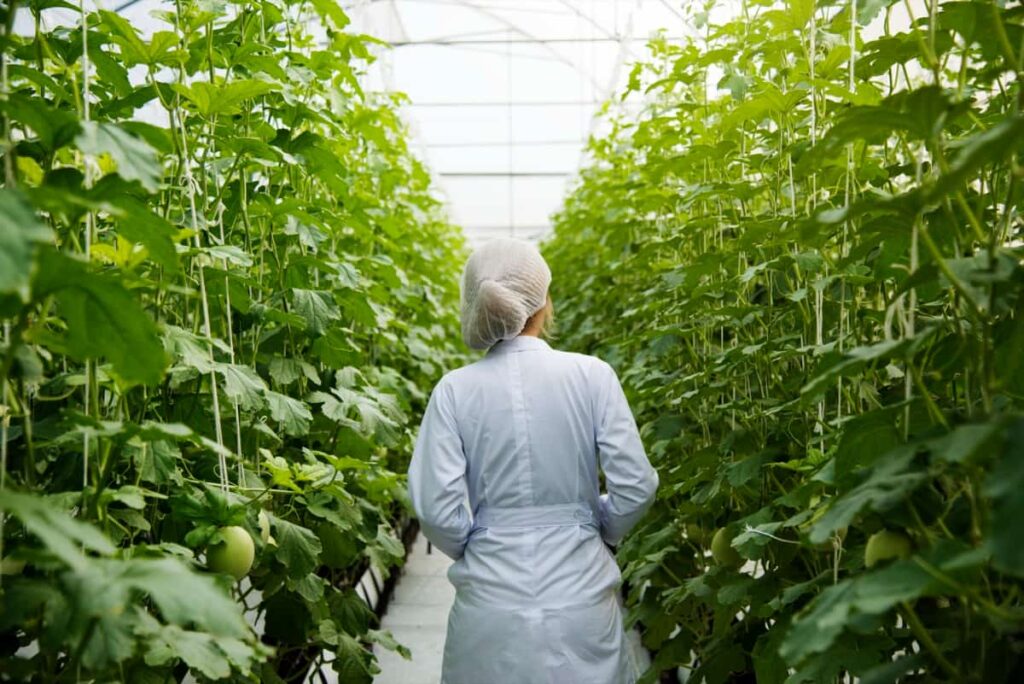
Proper ventilation ensures air circulation and exchange while lighting systems supplement natural sunlight and provide consistent illumination. Artificial lighting, like high-pressure sodium (HPS) or light-emitting diode (LED) lights, extends photoperiods and enhances plant growth. By effectively managing temperature, humidity, ventilation, and lighting, climate control systems improve crop yields, quality, and overall plant health, enabling Australian greenhouse farmers to produce high-quality crops year-round.
Pest and Disease Management in Australia Greenhouse Farms
Common pests in greenhouse farming include aphids, whiteflies, thrips, spider mites, and mealybugs. These pests can cause damage to crops by feeding on plant sap, transmitting diseases, and reducing overall plant health. Diseases affecting greenhouse crops include fungal diseases like powdery mildew, botrytis, damping-off, and viral and bacterial infections.
These diseases can lead to stunted growth, wilting, discoloration, and reduced yields. Pest and disease management in Australian greenhouse farms involves a combination of preventive measures and control strategies. Integrated Pest Management (IPM) practices are commonly employed, which focus on biological control methods, cultural practices, and judicious use of pesticides when necessary.
This approach emphasizes monitoring and early detection of pests and diseases, promoting beneficial insects, practicing crop rotation, maintaining proper sanitation, and using resistant varieties. Biological control involves introducing beneficial insects like ladybugs or predatory mites to control pest populations naturally. Cultural practices such as proper spacing, adequate ventilation, and regular plant inspection help reduce pest and disease incidences.
When necessary, targeted and judicious use of pesticides is applied following strict guidelines to minimize environmental impact and protect beneficial organisms. Regular monitoring, identification of pests and diseases, and timely intervention are crucial for effective pest and disease management in Australian greenhouse farms.
Greenhouse Automation Technologies in Australia
Greenhouse automation technologies have gained popularity in Australian agriculture, offering enhanced efficiency and productivity. These technologies automate various aspects of greenhouse operations, such as climate control, ventilation, irrigation, and nutrient delivery. Sensor-based systems monitor temperature, humidity, and CO2 levels and adjust environmental conditions accordingly.
Automated ventilation systems and shade controls optimize air circulation and light exposure. Sensors monitor soil moisture levels and deliver water and nutrients based on plant requirements. Automation also aids crop monitoring and data collection, capturing real-time data on plant health, growth rates, and pest/disease infestations. Automated robotic systems are being developed for seeding, transplanting, and harvesting, reducing labor requirements and improving operational efficiency.
These technologies integrate with digital platforms and software for centralized control, monitoring, and data analysis, allowing farmers to remotely manage greenhouse operations and make data-driven decisions for optimized production. The need for increased efficiency, precision, and sustainability in agricultural practices drives the adoption of greenhouse automation technologies in Australia.
Energy-efficient Practices in Australian Greenhouse Farming
Australian greenhouse farming requires energy-efficient practices to reduce energy consumption and minimize environmental impact. Strategies include insulation, energy-saving lighting, renewable energy sources, efficient heating and cooling, water-efficient irrigation systems, and energy monitoring and management. Insulation helps retain heat, while LED lights provide adequate illumination for plant growth.
Renewable energy sources like solar panels generate clean energy, while advanced heating and cooling systems optimize temperature control. Water-efficient irrigation systems minimize water waste and energy associated with water pumping. Energy monitoring systems help track usage and identify areas for improvement, ultimately contributing to a more sustainable agricultural sector.
In case you missed it: How to Grow Tomatoes in Australia from Seed: Best Time to Plant in Pots, the Backyard at Home for Sydney, Melbourne, and Victoria
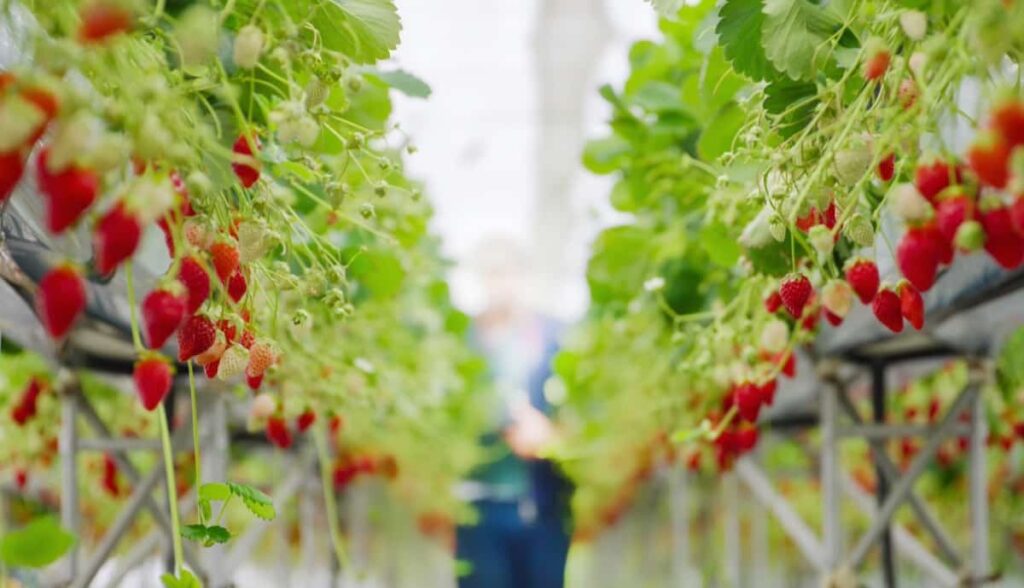
Market Trends and Opportunities in Australian Greenhouse Farming
Australian greenhouse farming faces a promising future due to rising demand for fresh, locally sourced food, year-round crop availability, and quality control. Successful farms in Australia utilize advanced technologies, efficient resource management, and sustainable cultivation methods to meet market demands.
Adopting greenhouse automation, data-driven decision-making, and precision agriculture techniques enhances productivity and competitiveness. Opportunities for expansion and diversification exist in specialty crops, niche markets, and value-added products. With proper planning, investment, and strategic marketing, Australian greenhouse farmers can capitalize on these trends and the growing demand for sustainable, locally grown greenhouse produce.
Conclusion
Australia’s greenhouse farming industry holds the secrets to year-round production, increased crop yields, and sustainable agriculture. With advanced technologies and strategic practices, it continues to thrive, providing fresh and high-quality produce for consumers while minimizing environmental impact.
- How to Raise Pigs in Your Own Backyard: A Comprehensive Guide
- Budget Friendly Sheep Shed Ideas: Cheap and Low-Cost Tips
- How Much Do Cattle Farmers Make: Revenue Streams in Cattle Farming
- Management Pests and Diseases in Your Cotton Field
- Sheep Farming Business Plan for Beginners
- Aquaponic Farming at Home: A Step-By-Step Guide
- Profitable Village Farming Business Ideas in 2024
- High-Yield Aquaculture: Fast-Growing Fish for Farming
- Effective Fish Pond Construction Techniques for Beginners
- Irrigation and Water Management in Pineapple Farming
- Blossom to Harvest: Mastering Flowering and Pollination in Papaya Farming
- Pig Fattening Essentials: From Selection to Sale for Beginners
- Raising Wagyu Cattle: A Complete Guide for Premium Beef Production
- Soil Types and Their Water Holding Capacity
- Optimizing Irrigation Schedules for Coconut Groves for Enhanced Yield
- Espresso Your Garden: Coffee Grounds for Healthier Acid-Loving Plants
- The Best Soil Mix for Snake Plants: How to Mix Your Own Snake Plant Soil
- Green Thumb Success: Expert Tips for Cultivating Greenhouse Beans All Year Round
- Bloom All Year Round: The Ultimate Guide to Indoor Hyacinth Care
- Eco-Friendly Gardening: How to Make Liquid Fertilizer from Kitchen Waste
- Ultimate Guide to Grow Anise in Pots: Explore Seed Propagation to Harvesting
- Guide to Raising Chester White Pigs: Discover Breed Facts to Growth Management
- Mastering the Elegance: The Ultimate Guide to Weeping Cherry Tree Care, Planting, and Maintenance
- Ultimate Guide to Planting Garlic in Grow Bags: Growing Strategies for Beginners
- How to Fix Spider Plant Leaf-Related Problems: Natural and Organic Remedies
- 10 Reasons Why Your Tulsi Plant is Shedding Leaves: Home Remedies and Solutions
- Optimizing Growth and Yield: The Advantages of Palm Bunch Ash Fertilizer
- Utilizing Neem Oil Extract as a Natural Pesticide for Hydrangea
- From Soil to Harvest: Various Ways in Which Farmers Can Use AI Tools
- Steps to Encourage and Induce Citrus Flowers: A Comprehensive Guide
- How to Fix Snake Plant Leaf-Related Issues: Natural and Organic Remedies
- Transform Your Garden into a Fragrant Oasis with Raat Ki Rani (Night Blooming Jasmine)
- Discover the Ideal Chicken Breeds for Philippine Farms
- How to Create a Poultry Egg Farm Business Plan for Profits
- Grow Lemon Cucumbers Like a Pro: Insider Techniques for Bountiful Yields
- Ultimate Guide to Caring for Your Pink Princess Philodendron: Tips for Thriving Variegation
